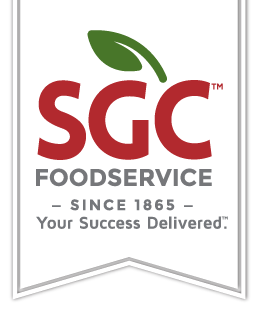Supply chain issues remain a part of life in 2023. Three main factors have contributed to the current supply chain disruptions—the pandemic, extreme weather conditions, and geopolitical unrest in Ukraine. Most sectors of our economy are affected, and restaurants are no exception. The best defense is to know what to expect and how to react to it.
The vast majority of restaurants (96%) say they experienced shortages or delays in vital food and beverage supplies during the last six months. About ¾ of those restaurants made menu alterations as a result of those supply chain issues.
Here are some creative ways to deal with supply chain issues while continuing to drive revenues and maintain or increase profitability:
Streamline Menu Offerings—
As most restaurant owners know, expansive menus made up of elaborate dishes use more ingredients, create complexity, and lead to overall higher food costs. Featuring dishes that use high quality products that can be adapted to many types of preparation is one way to streamline your menu. Switch to cost-effective but quality meat and seafood items, and target ingredients that can be used for numerous applications -- appetizers, entrees, soups, etc. This economizing process will provide more control over portion pricing.
Analyze Your Plate Costs—
Examining your food costs by taking stock of your current menu items and analyzing profit margins per plate is key to adapting to supply chain issues. Keep your most profitable and most popular dishes to maximize returns and to give your customers what they want, thus boosting revenues.
Inventory Management Maintenance—
Keep track of your restaurant inventory, especially in the face of supply chain challenges. Good inventory management will allow you to identify overspending, spoilage, and theft—all issues that can negatively affect food costs and profitability.
Cut Out Food Waste—
Keeping food waste in check can do wonders for your bottom line profitability. Oversized portions, expansive menu offerings, improper food storage that leads to spoilage, and wasting trimmings and scraps are all causes of food waste. Controlling unnecessary food waste through regular inventory management and staff training are relatively easy ways to keep waste and associated costs under control.
The Possibility of Recession Continues to Loom
The pandemic had an initial, as well as ongoing, effect on the supply chain. Plant shutdowns, inventory shortages, and backlogs in production at the height of the pandemic caused higher consumer prices which contributed to inflation, as well as supply chain issues from which we still have not fully recovered.
Hints of a recession have hung over the economy since 2021 and will likely continue to play a role in 2023. Higher inflation and rising interest rates are common factors related to some level of recession, which could further affect supply chain. Due to the supply chain’s relationship with supply and demand, a recession might allow the supply chain to rebalance and improve the ability to meet future needs. But a recession could also impact other weaknesses in the supply chain such as labor shortages and critical product shortages.
The conflict in Ukraine resulted in rising fuel costs and transportation issues in 2022. Business leaders are concerned that the Russian/Ukraine war will continue to affect the supply chain due to political unrest, raw material cost increases, and rising fuel and energy costs. Some goods, especially grain from Ukraine, may continue to be a significant supply issue in 2023.
The year 2022 saw historically extreme weather conditions that affected supply chain. Events like drought and flooding have an obvious impact on food and water supplies. Natural disasters result in a disruption of the flow of goods, especially goods which directly impact the restaurant business.
The predominant theme of the past two years continues into 2023—uncertainty. With numerous factors at play, it is difficult to predict what will happen in 2023, but being proactive in economizing menu offerings, improving inventory management, performing ongoing food cost analysis, and reducing food waste are steps you can take to react in a positive way to the uncertainty.

_c56wug1x.jpg)